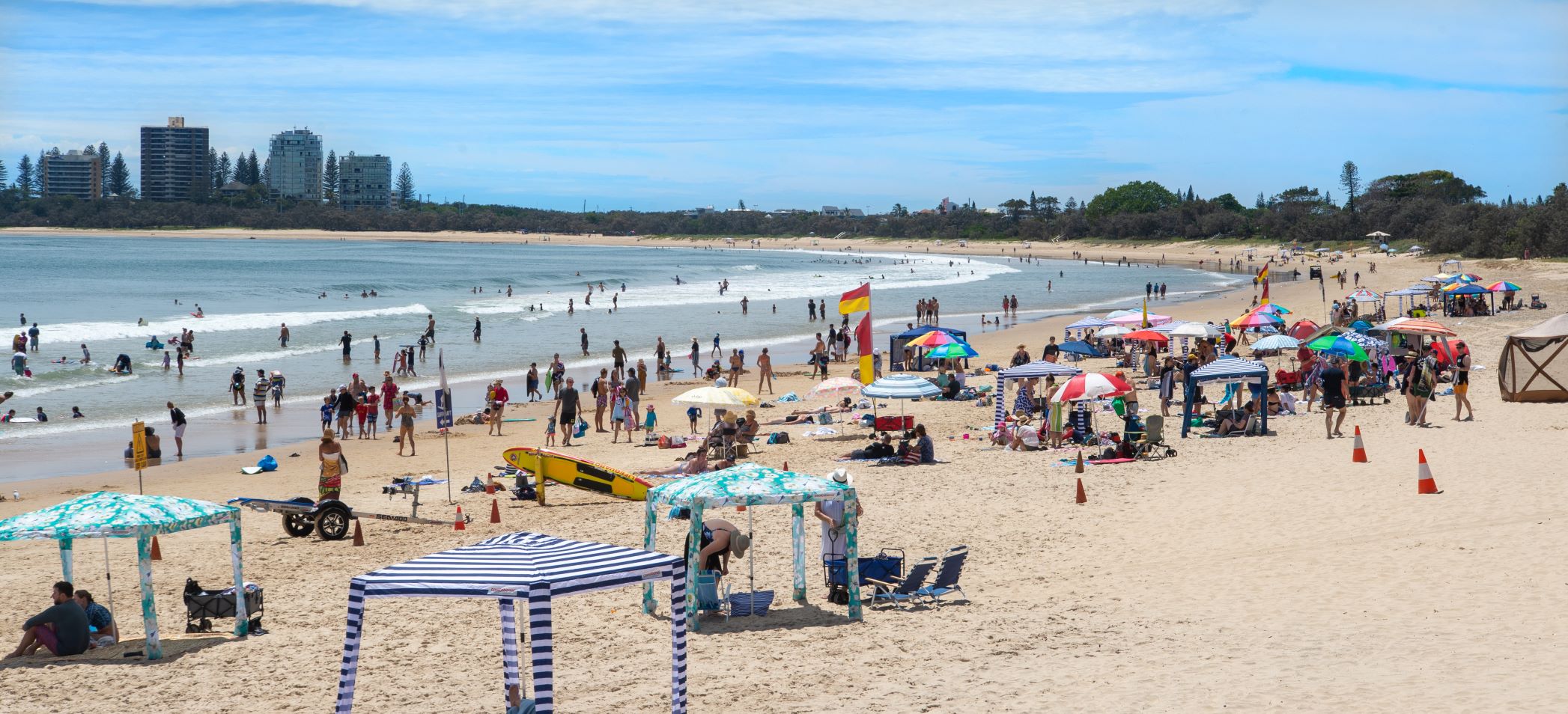A host of weather-related records were eclipsed on the Sunshine Coast during 2023, when unusually hot and dry conditions made their presence felt.
New temperature and rainfall marks were set, as the region was impacted by the emergence of El Nino and the effects of climate change.
Bureau of Meteorology Senior Climatologist Brad Jackson outlined the year that was, as the region was gripped in another heatwave.
“The Sunshine Coast was warmer and drier than average,” he said.
Do you have an opinion to share? Submit a Letter to the Editor at Sunshine Coast News via news@sunshinecoastnews.com.au. You must include your name and suburb.
“We had the El Nino climate driver in the Pacific Ocean that changed the atmospheric conditions … it resulted in bringing warmer air from central Australia and reducing that rainfall capability.”
But high temperatures and dry spells weren’t the only extremes, with at least one record low temperature proving that the weather can be unpredictable amid trends.

“There were a number of standout statistics that highlighted the type of year it was,” Mr Jackson said.
At Sunshine Coast Airport, there was the lowest temperature for a May day (3.3 degrees Celsius on May 9), the lowest mean daily temperature for May (16.4 degrees Celsius), the lowest mean daily minimum temperature for May (9.6 degrees), the highest mean daily maximum temperature for June (22.9 degrees Celsius), the highest mean daily temperature for June (16.7 degrees Celsius), the highest mean daily minimum temperature for August (12.4 degrees Celsius), and the highest mean daily temperature for August (17.9 degrees).
At Nambour, there was the lowest monthly rainfall for March (63mm).
At Caloundra Airport, there was the lowest monthly rainfall for October (7.4mm).
At Tewantin, there was the lowest monthly rainfall for March (50.8mm), the highest temperature for a June day (28.6 degrees Celsius on June 26), and the highest minimum temperature for a February day (26.7 degrees Celsius on February 4).
While 2023 was a warmer year on the Sunshine Coast, it wasn’t the warmest.
“It was about 0.5 degree Celsius warmer than average (with a mean maximum temperature of about 26 degrees Celsius) but the warmest year on record was in 2019, when it got up to 26.8 degrees Celsius for the mean maximum temperature for the year” Mr Jackson said.

He said 2023 was “probably in the top 20 or 30 hottest years on the Sunshine Coast.”
“It came off the back of triple La Ninas (three years of typically cooler conditions) which had a bit of an influence. There was a bit of a lag effect with that.”
And while 2023 was a dryer year on the Sunshine Coast, it wasn’t the driest.
“2019 was drier and there were some years in the early 200s that were very dry, so it’s not the driest on record, but it’s probably in the top 10 driest years on record.”
Recent rain ensured December was the wettest month on the Sunshine Coast in about eight months.
Scroll down to SUBSCRIBE for our FREE news feed, direct to your inbox daily.





